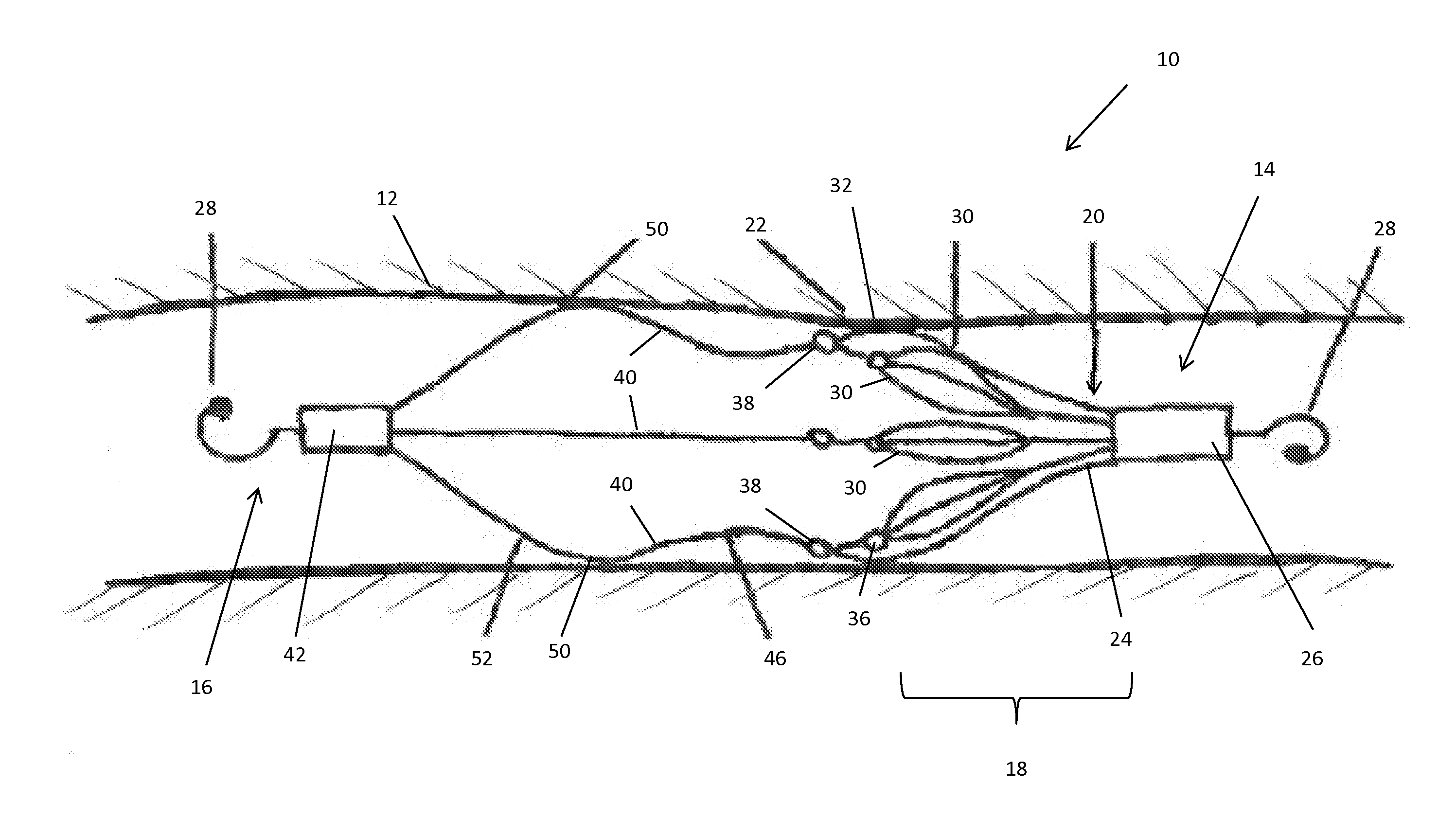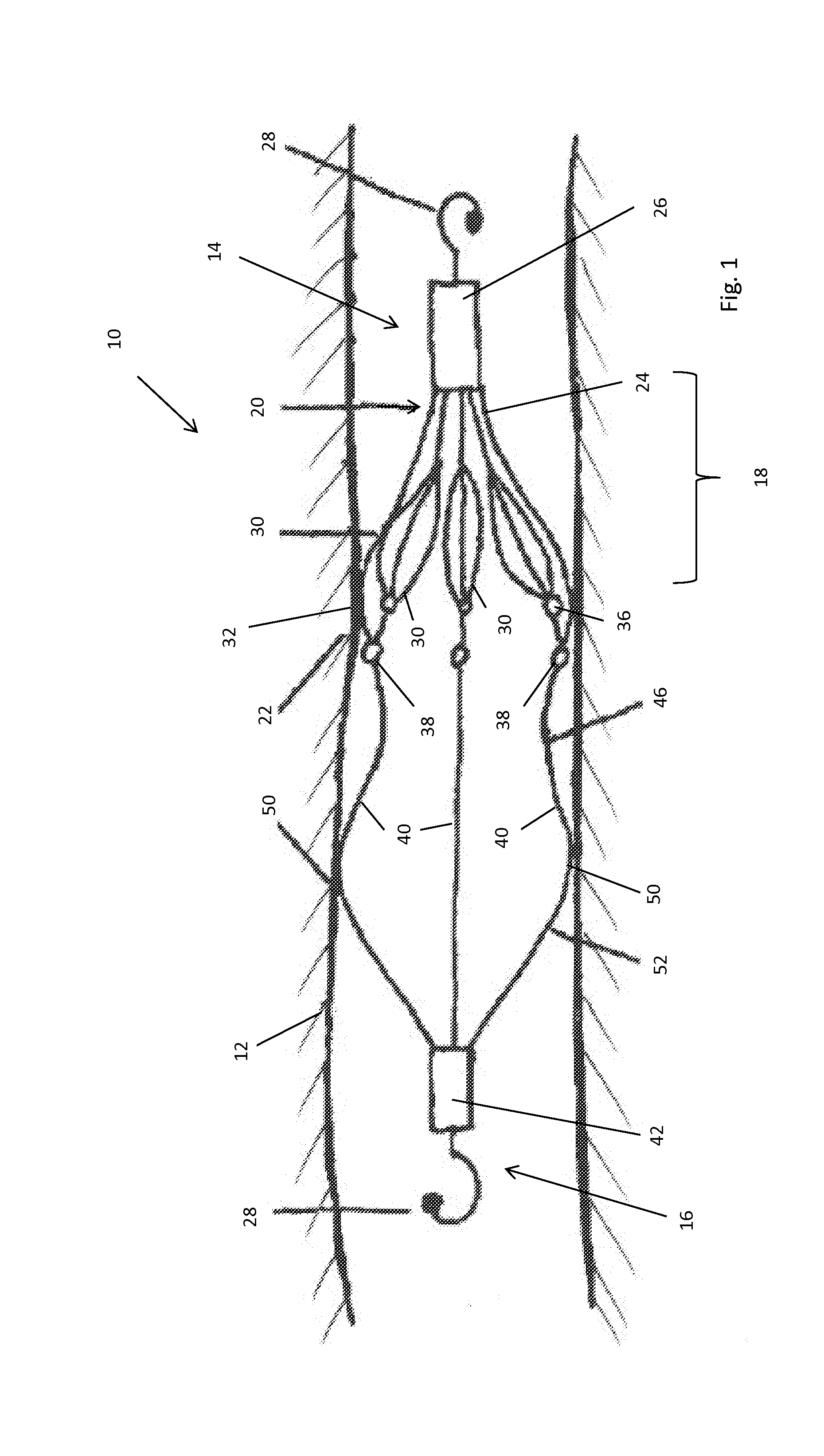Vena cava filter
- Summary
- Abstract
- Description
- Claims
- Application Information
AI Technical Summary
Benefits of technology
Problems solved by technology
Method used
Image
Examples
Embodiment Construction
[0032]There is described below a preferred embodiment of the present invention, which is configured as a vena cava filter. It is to be understood though that the teachings herein are not limited to vena cava filters and are equally applicable to filters disposed in other body lumens and can also be modified to form an occlusion device or an embolic protection device.
[0033]Referring first to FIG. 1, this shows an embodiment of implantable medical device 10 deployed in the vena cava 12 of a patient. The medical device has a longitudinal dimension extending to first and second ends 14 and 16. The medical device 10 includes a material capture element 18 which has a generally closed conical deployed shape with a narrow end 20 disposed at or proximate the first end 14 of the device 10, and a wide end 22 facing the second end 16 of the device 10.
[0034]The material capture element 18 in this embodiment is configured as a filter and is formed of a plurality of wires 24 arranged in the form o...
PUM
 Login to View More
Login to View More Abstract
Description
Claims
Application Information
 Login to View More
Login to View More - R&D
- Intellectual Property
- Life Sciences
- Materials
- Tech Scout
- Unparalleled Data Quality
- Higher Quality Content
- 60% Fewer Hallucinations
Browse by: Latest US Patents, China's latest patents, Technical Efficacy Thesaurus, Application Domain, Technology Topic, Popular Technical Reports.
© 2025 PatSnap. All rights reserved.Legal|Privacy policy|Modern Slavery Act Transparency Statement|Sitemap|About US| Contact US: help@patsnap.com



